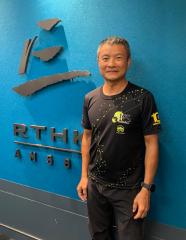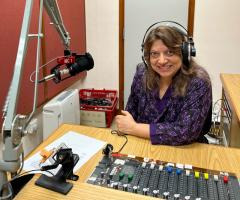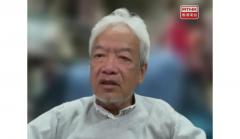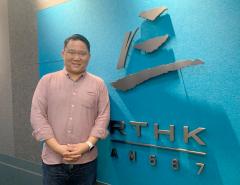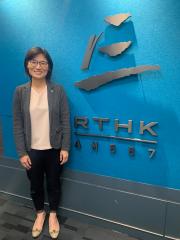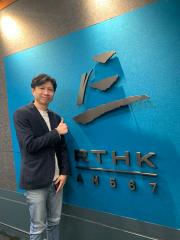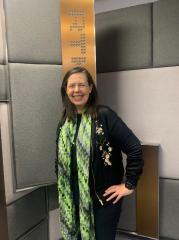简介
Listen to #Hashtag Hong Kong every Sunday morning at 8.15
Focussing on issues affecting civil society, we'll hear from representatives of NGOs, associations, statutory bodies, and non-profit groups.
(Sundays 8.15am - 8.25am)
最新
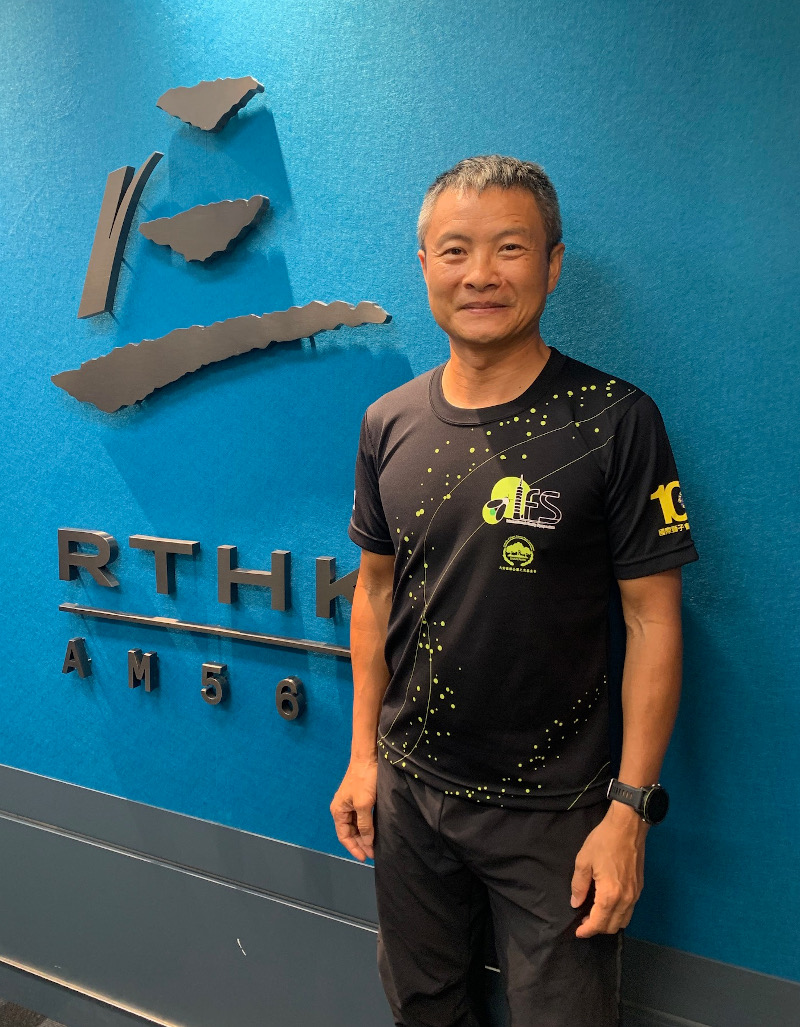
Yiu Vor, Vice President of Hong Kong Entomological Society
Light Pollution is driving some Hong Kong species towards extinction
The Maipo Bent-winged Firefly has recently been assessed for the IUCN (International Union for Conservation of Nature) Red List of Threatened Species and listed as Endangered. An endangered species is very likely to become extinct in the near future.
Named after Mai Po, the place where it was first discovered, this firefly was described as a new species in 2011.
The rapid decline of this firefly in Fung Lok Wai suggests that the continuous and significant increase in ambient light intensity at night, caused by the coming large-scale land developments around Mai Po, may cause most or all of the sub-populations of this firefly in Hong Kong to disappear.
The Maipo Bent-winged Firefly is not the only victim. The Chenghoiyan Ototretine Firefly, a species endemic to Hong Kong, has recently been listed as Critically Endangered, indicating an extremely high risk of extinction. The population size has sharply decreased over the past 10 years, believed to be due to the erection of very bright street lamps in its highly constricted habitat. The species are also continuously threatened by light pollution from the rapidly expanding Hong Kong International Airport and Tung Chung City.
Fireflies utilize light signals for communication and finding mates. Recent studies have confirmed that Artificial Light at Night, known as ALAN, even at low intensity, could reduce the courtship and mating success of firefly species. A newly published research on America fireflies showed a significant reduction in the flashing activity of both males and females exposed to ALAN during courtship. Another study on an Europe Glow-worm firefly found that females in dark surroundings typically stopped glowing after one night, indicating that they had mated, while females in illuminated areas glowed for significantly more nights, in some cases up to 15 nights.
ALAN doesn't only affect fireflies; it also has detrimental impacts on many other insect populations, with consequences for birds and other wildlife that rely on insects along the food chain. ALAN creates fatal attraction for many nocturnal moths, beetles, and other insects, as well as spotlighting insect prey for their predators at night. Light pollution also interferes with plant phenology, disorients migrating birds and newly hatched sea turtles, and negatively impacts amphibians’ foraging and reproductive habits.
The use of artificial light at night has expanded and intensified over the past decades. Global levels of light pollution have increased by 10% every year since 2011. Recent advances in LED technology have accelerated these trends. According to data collected by HKU’s Night Sky Brightness
Monitoring Network, Hong Kong appears to have the worst light pollution on the planet – more than a thousand times brighter than the natural dark sky.
Pollution results from excessive or improper use of substances or energy. There's no difference in light pollution. Many lighting devices are unnecessarily too bright, improperly designed, installed, or used. For example, many billboards and large traffic signs are illuminated from below instead of above, causing most of the light to shine directly into the sky. This is a selfish way of installing lighting devices — sacrificing the environment for installation convenience.
It's a consensus to keep the planet healthy and beautiful for future generations. While we've spent significant political, economic, and legal resources on controlling various forms of pollution, surprisingly little has been done to regulate light pollution compared to solid, water, air, and noise pollution.
The effect of controlling light pollution is immediate. When lights are off, pollution is reduced. As citizens, there are many ways to reduce light pollution: use light only where and when needed, use the least amount of light necessary, and keep indoor lights internal by drawing curtains and lowering blinds.
However, individual efforts may not be sufficient, as many lighting devices are installed in public or commercial areas beyond individual control. The Public Lighting Design Manual prepared by the Highways Department provides guidelines for public lighting installations. But why is Hong Kong still one of the worst light-polluted cities in the world? Is the manual updated enough to address more stringent regulations on light pollution? Is its scope too narrow to cover areas not controlled by the Highways Department or owned by the commercial sector? The Environment and Ecology Bureau implements the “Charter on External Lighting” aimed at encouraging owners and responsible parties of external lighting installations to switch off lighting installations for decorative, promotional or advertising purposes which affect the outdoor environment during the preset time. As a Charter without Legal bindings, its effectiveness is questionable. Introduced in 2016, the charter has garnered signatures from less than 5,000 organizations to date. In contrast, countries like France, Slovenia, Croatia, the Czech Republic, the UK, and New York have implemented laws aimed at curbing light pollution. Considering Hong Kong's status as an advanced city, there is a pressing need for more proactive measures to combat light pollution.
This morning I’d like to dedicate this song “A Sky Full of Stars” by Coldplay to all of you listening.
Thank You
重温
Faride Shroff, the Founder and CEO of SENsational Foundation
Hello, My name is Faride Shroff, the Founder and CEO of SENsational Foundation. Disability inclusion is an increasingly important field that has gained prominence and attention in recent years. Despite this, people with disabilities often referred to as PwDs, remain a marginalised and often neglected group in society, as well as an untapped talent pool, with limited access to opportunities and resources, especially in Hong Kong.
There are a number of prominent problems that PWDs are facing in the workplace and in education. Whether this be a lack of knowledge on disability inclusion or the sheer disinterest in hiring people with disabilities, there is a large gap in disability awareness in Hong Kong.
To begin with, let’s talk about accessibility, there are so many buildings, offices, public facilities and educational institutions where accessibility measures have not been kept in mind. This can be solved by adhering to the principles of human centred universal design for urban development. Even new buildings that are meant to be fully accessible for all, have limitations such as cargo lifts for wheelchair users, smaller lift door sizes that hinder movement, lift buttons without sensory and tactile accommodations, and heavy access doors that only have a handle. Accessible restrooms ironically are still not accessible to all PwD’s.
Making physical spaces, transportation, information, and communication accessible to individuals with diverse disabilities are very important. Some real time examples could be installing ramps, elevators, and handrails and designing websites and digital content to be accessible to people with visual or hearing impairments. Advocating for their rights through public campaigns, workshops, and training programs that educate the general public, employers, and educators about disabilities ignites the conversation about disability inclusion and hopefully sparks action from society we live in.
Discrimination and social isolation are another factor that affect PwD’s on a daily basis. Whether that discrimination is from peers or from the general community, whether this is intentional or not, it manifests due to unconscious bias, judgment and fear. Due to this, PwD’s face stigmatisation leading to social isolation and limiting their social interactions. This isolation can impact their well-being and mental health, interfering with their integration into the workplace and educational environment.
Limited opportunities in education, services and employment are also affected in Hong Kong. It is an ongoing journey where we all have a part to play. Each student has a right to be given equitable opportunities to thrive in the learning environment, to receive a fair education regardless of disabilities. Along with lack of accommodations, many schools and companies do not provide assistive technologies such as braille displays or speech to text software. PwD’s often face multiple barriers when seeking employment, which stems from the stigma and negative preconceived opinions about their capabilities. Due to these perceptions, companies tend not to consider PwD’s when posting job vacancies.
It is a learning process for everyone. The first step is acknowledging the problems that PwD’s face on a daily basis and educating yourself on how you can make a difference whether that be in the workplace, educational environment or in your community. Collaborative efforts and activating allyship need to be done to address these challenges. The mindset of promoting accessibility, implementing inclusive policies and most importantly raising awareness about disability inclusion needs to happen every day. Even the smallest change can make a PwD’s daily experiences more positive. By breaking barriers of stigma that surrounds PwD’s, it is already a step in the right direction.
At SENsational Foundation, we believe that disability inclusion is not only a matter of social justice but a human right. Investing in disability inclusion, we will be able to create a more equitable and inclusive society where everyone can participate and reach their full potential. Remember, we all are SENsational! I would now like to dedicate this song for all PwD’s saying I am Alive by Celine Dion.






